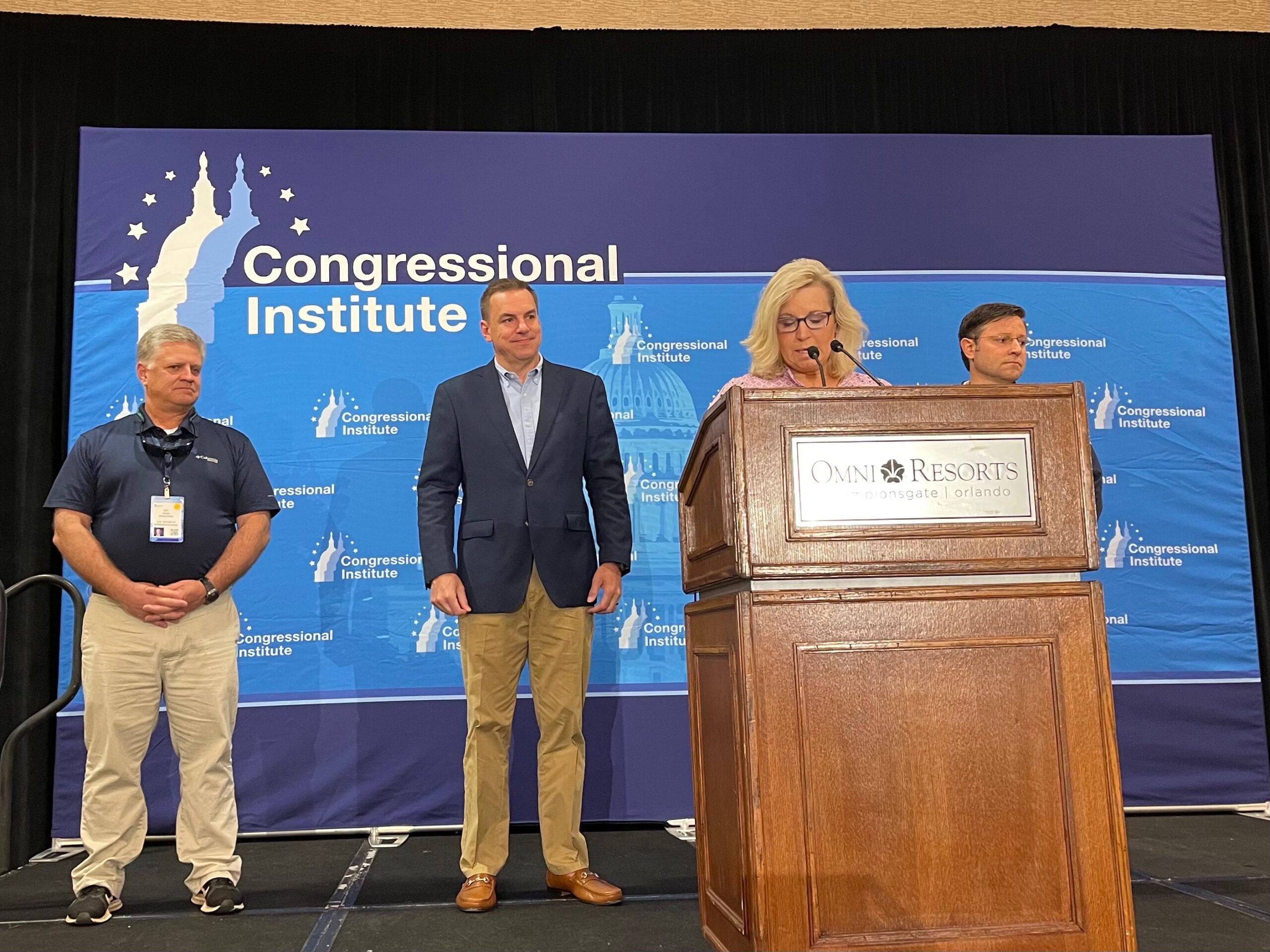CARLSBAD, Calif. — When Republican Rep. Darrell Issa announced his retirement in January activists across his coastal California district rejoiced. They’d succeeded in scaring off the wealthiest lawmaker in Congress, famous for gleefully pestering the Obama administration.
Then reality set in. Issa’s departure opened the floodgates for fresh-faced Republicans to jump in, decreasing Democrats’ odds of flipping the seat.
Anti-Issa signs remain scattered around Mike Levin’s San Clemente field office. Levin, a clean energy advocate, is one of the four Democrats running.
“Stop Trump, defeat Darrell Issa,” reads one sign. Another warns: “Lives at stake! Darrell Issa, stop cutting our healthcare.”

For two years, grassroots activists have systematically worked to mobilize residents across the coastal district to vote Democrat. Terra Lawson-Remer co-founded FLIP the 49th PAC with the sole purpose of ousting Issa. His decision to retire snatched away their unifying target. Now residents of the 49th are scared that a Democrat won’t make it through the primary.
“If there’s a hero to this story it’s the grassroots volunteers in the district and if there’s a villain to this story I would say it’s the candidates,” Lawson-Remer said of the Democrats in the race. “It’s pretty on the razor edge; this is not a time for complacency.”
On primary day in California, voters in districts across Orange County have one question: Are Democrats going to get locked out of critical House races? Issa’s seat isn’t the only one Democrats are worried about. To the north, in retiring GOP Rep. Ed Royce’s seat, Democrats were so fearful of a shut out that the top-two candidates in the race brokered an agreement to stop negative attacks.
The 49th and 39th Districts of California were supposed to be the easy pickups. For months, they were trending in Democrats’ favor, but then Issa and Royce dropped out, more Republicans jumped in, and Democrats refused to give up their bids.
At a meet and greet in Carlsbad with undecided voters, Democrat Sara Jacobs addressed the top-two primary in her opening monologue before voters could even ask about it.
“I know we’re all worried about the top-two but we are feeling really good, we are seeing a tone of energy and excitement for our campaign, especially among women and young people,” said Jacobs, claiming that she’s the only Democrat with upward momentum. “So you can vote for me with your heart and your head.”
But they asked anyway. Jacobs, the granddaughter of a Qualcomm co-founder, fielded more questions about the top-two system than any other topic.
“My biggest fear is because there are so many of you running that we are going to have a Republican runoff,” said Bobbie Henry. “I was up half the night last night thinking about it. It just scares me so much that we’re just going to get another Issa in there.”
Henry, a resident of the district for eight years, wanted to know if any of the candidates discussed dropping out for “the good of our state.”
“So we’ve never had that conversation, partially because um, well, there’s a lot of ego involved in this race,” Jacobs said.
Jacobs repeatedly pointed to her gender as an advantage voters should consider when choosing between her and the other Democrats.
“What we’re seeing across the county, in almost every primary that’s happened so far, when there’s one woman in the race and multiple men, the women are polling sort of around the top but not anything break away and then are winning by quite a lot of points,” she told residents in Carlsbad.
Jacobs expressed confidence that a Democrat would make it through to the general, pointing to polling that shows Republican Diane Harkey consolidating GOP support, leading with 24 percent.
.jpg)
The same poll put Jacobs neck-and-neck with retired Marine Col. Doug Applegate, a fellow Democrat, for the second slot behind Harkey at 11 percent. Levin comes in at 10 percent. Republican Rocky Chavez, a state assemblyman, and Democrat Paul Kerr come in at 8 percent.
But a separate poll by Tulchin Research put Levin at the top of the pack with 17 percent and Harkey right behind him at 15 percent. Levin like Jacobs has tried to calm voters fearful of a Democratic lockout.
“I’ve worried about it straight through,” Levin said, adding he wouldn’t want to switch spots with any of the other candidates.
Still, the uncertainty is spooking residents who want to flip the district.
“I don’t think there’s anybody in our district that isn’t absolutely terrified,” said Mary Schrader, a former Republican living in Carlsbad.
Schrader feels abandoned by the Republican party. She grew up listening to her military family talk about “Reagan, Reagan, Reagan.” She voted for Ohio Gov. John Kasich in the 2016 primary. The stay-at-home mom has dedicated the last two years of her life to flipping the district, working with the FLIP the 49th PAC.
Whether it’s a phone call, a grassroots meeting, or a rally, Schrader told herself, “I need to do something every single day from now on.” Her motivation, like other former Republicans and independents who spoke to the Washington Examiner, is Trump.
“I did leave the Republican party because of Trump,” Schrader said. “I don’t feel that I’ve changed as a person in my beliefs and my philosophies but I feel like the Republican party has become so far right that it doesn’t represent me.”
David Berke is voting in the primary to “overturn the Republican majority in the House.”
“There used to be something called moderate Republicans and they no longer exist, but if they did I probably would be one of them but those days are gone and you have a choice you have to make,” said Berke, a registered independent.
There’s no escaping the changes in Orange County. Republicans have steadily lost ground in the region as demographics have changed and people from Los Angeles County, have moved into the area.
Recognizing the threat after Hillary Clinton became the first Democrat to win Orange County since 1936, Republicans got to work, opening a large field office in Irvine. They’re currently only using half of it — the rest will be occupied as general election races ramp up.
In the final week ahead of the June 5 primary, the National Republican Congressional Committee launched a six-figure campaign across the open 49th and 39th Districts and in incumbent Republican Rep. Dana Rohrabacher’s 48th District.
The ads across Facebook, Google, TV, and text message will target Trump loyalists as well as Korean- and Mandarin-speaking Republicans through Tuesday.
There’s no denying that there’s been “lackluster Republican voter participation” for several cycles out of Orange County and the demographics are changing, said Rob Stutzman, a longtime GOP strategist in the state.
Stutzman still thinks it will be “difficult” for Democrats to win in Orange County unless it’s a presidential year, but the seats will likely be competitive from here on out.
“It’s hard to imagine a decade from now we’re talking about Orange County being as solidly Republican as it has been for the last 50 years, Stutzman said.
But in the 39th District, losing Royce to retirement “hurt” Republicans’ chances of holding the seat. Royce outperformed Trump by 18 points in 2016 and had potential to be seen differently than the president, Stutzman argues.
Royce’s open seat, which runs from Fullerton through Yorba Linda and into eastern parts of Los Angeles County, has changed more than any other district in the region. It’s a minority-majority district now, and Democrats make up roughly 34 percent compared to Republicans’ 36 percent. The rest are independents.
“It’s not your grandfather’s Orange curtain,” said Thad Kousser, a professor of political science at the University of California at San Diego.
As the GOP ranks shrink across California, Kousser said, the party doubles down, becomes more purest and embraces Trump conservatism.
“In the short term it may help you hold onto your base and hold onto some of these districts, but in the long term it makes the party less relevant in California politics,” Kousser said.
The shifting dynamics in the 39th district make Democrat Sam Jammal hopeful. The former Obama administration official, thinks fears over a lockout are bordering on “paranoia.” Though he’s facing Democrats with more money and more endorsements, Jammal’s confident he has an avenue to victory. There’s no reliable polling on the district, he said, because no one knows how to survey the residents. Royce’s popularity and grip on the district made it pointless to even try.
“What we’re seeing on the ground is this thing is wide open,” he said.
No one knows how much Republican Phil Liberatore, who recently flooded the district with signs calling himself a “pro-Trump conservative,” will eat into Young Kim’s lead. Kim is the GOP establishment favorite and backed by Royce.
Then there’s the effort to recall Democrat Josh Newman. In 2016, Newman snatched the state senate seat, which encompasses the entire 39th district, from Republicans for the first time in more than 20 years. The measure to recall him is on the primary ballot, and it’s unclear if it will boost Democratic or Republican turnout.
Democrat Gil Cisneros is working to maintain his edge over the rest of the party’s field in the 39th. Cisneros, a wealthy lottery winner, is backed by the DCCC and a number of California Democrats. Over the weekend Democratic Reps. Linda Sanchez, Nanette Barragan, and Mark Takano campaigned with him across the district.

“I can worry only about what I can control and what we can control is getting our message out there,” Cisneros said of the crowded field.
In addition to Cisneros and Jammal, there is progressive Andy Thorburn, pediatrician Mai Khanh Tran, and two other Democrats.
Linda, a resident of the district since 1996, isn’t too concerned about Democrats being shut out. She’s a registered Republican and voted for Royce last cycle, but she’s appalled by what’s happening in Washington.
Linda asked that her last name not be used because she’d lose clients if they knew about her disdain for Trump. She had to campaign for former President Obama under the radar.
“I feel like my party left me in 1984,” she said. She’s voting for Jammal in the primary, but if Cisneros makes it through she’d be “thrilled.”
“I’m extremely unhappy with the president of the United States,” Linda said. “I mean I can’t believe he is actually still here.”
Whether Democrats survive the primary will be largely dependent on Republicans like Linda and the growing no party preference voters. The irony, said strategist Kurt Bardella, a former top aide to the outgoing Issa, is that the top-two system is giving Republicans a “second lease on life.”
“But it’s a misnomer to look at that and assume that Republicans are surviving California when really the process is protecting some of its people,” said Bardella, a Republican turned Democrat.
Ten years ago Issa was winning his seat in the 49th District by double digits, Bardella recalled. In 2016, Issa won re-election by less than one percentage point.
“If Democrats don’t take back the House it will be seats like this, the missed opportunities to even field a candidate, that will be hyper-scrutinized and likely to blame,” said Bardella.

